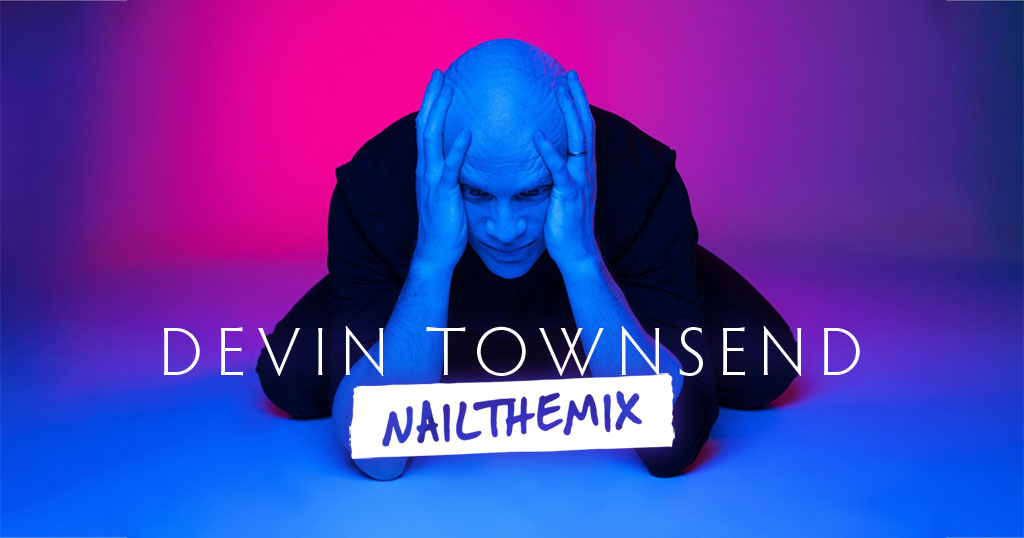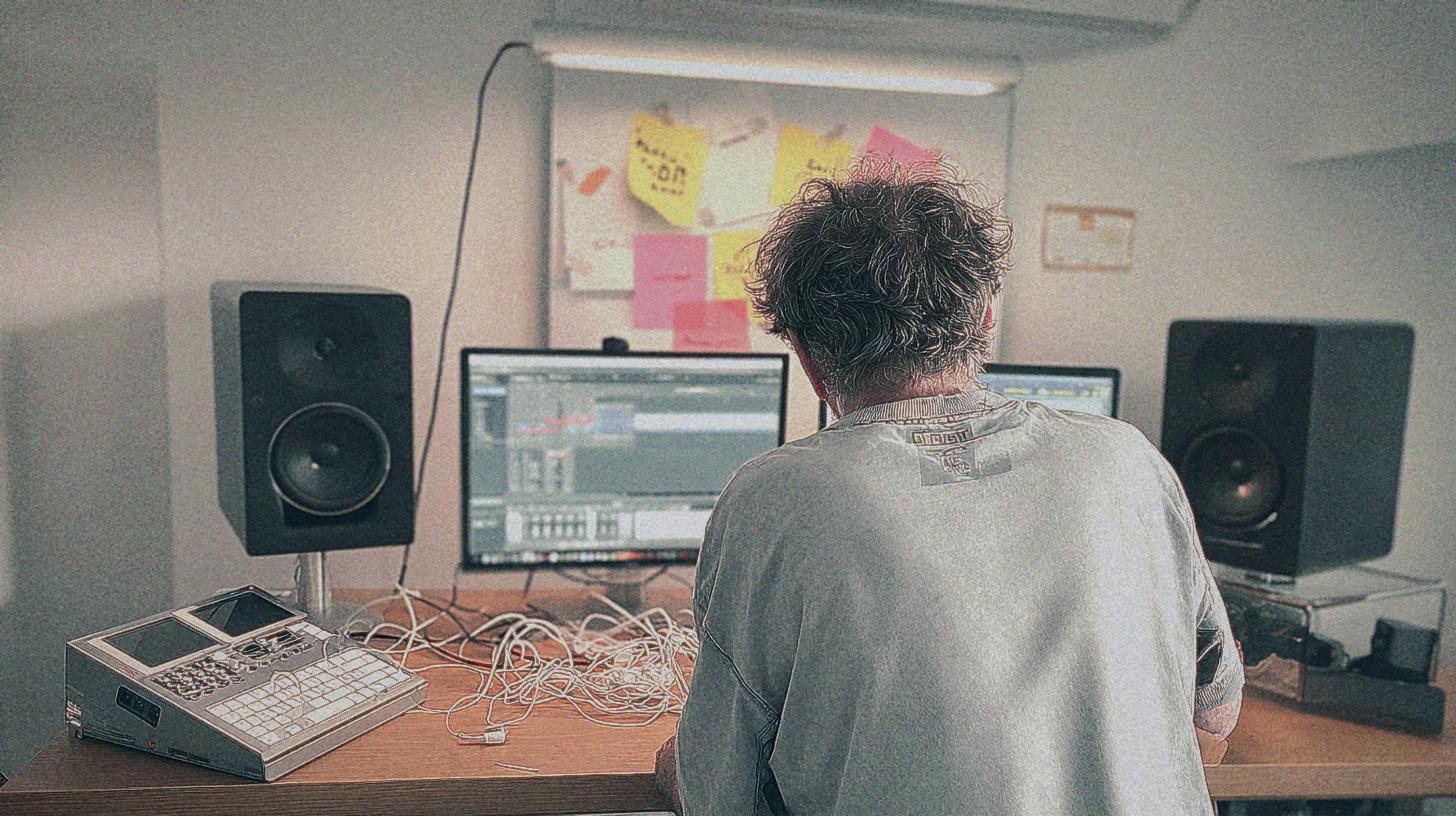
What Does Remastered Mean? A deep dive for metal producers
Nail The Mix Staff
You’ve seen it plastered on re-releases of classic metal albums: "REMASTERED." Sometimes it sounds incredible, breathing new life into an old favorite. Other times… well, not so much. But what does "remastered" actually mean, especially in the context of our beloved heavy metal? Is it some dark art, a simple volume boost, or something more nuanced?
For us producers, understanding remastering isn't just about appreciating old records. It’s about learning how sonic aesthetics evolve, how technical limitations (and advancements!) shape the final product, and ultimately, how to make our own mixes sound colossal. So, let’s cut through the noise and get into what’s really happening when an album gets the remaster treatment.
The Core Concept: What Actually Happens in Remastering?
First off, and this is crucial: remastering is NOT remixing. When an album is remixed, the engineer goes back to the original multitrack recordings – the individual drum mics, isolated guitars, separate vocal tracks – and creates an entirely new balance, often changing effects, panning, and even editing performances.
Remastering, on the other hand, almost always works with the final stereo mix (or sometimes, for more modern projects, stems) that was approved back in the day. Think of it as a final polish on an already completed painting, rather than repainting the canvas from scratch. The mastering engineer isn't messing with how loud the snare is compared to the kick; they're working with the combined sound of everything.
Key Goals of Remastering
So, if they’re not changing the mix, what are they doing? The aims can vary, but generally include:
- Improving Clarity and Definition: Maybe the original master from 1988 sounds a bit muddy on modern playback systems. A remastering engineer might use precise EQ to gently carve out some problematic frequencies (like a buildup around 250Hz in the low-mids) or add a touch of "air" with a high-shelf boost around 12kHz to enhance the cymbals and overall detail.
- Adjusting Loudness to Modern Standards: This is a big one. Older masters, especially from the vinyl era, are often significantly quieter than contemporary releases. Remastering typically involves increasing the overall perceived loudness to compete on streaming platforms and modern playback devices. This is where careful use of limiters like the FabFilter Pro-L 2 or iZotope Ozone Maximizer comes in.
- Correcting Technical Flaws: Sometimes, the original mastering session had limitations. Perhaps there was tape hiss, unwanted hum, or maybe the de-esser used on the vocals was a bit aggressive. Tools like iZotope RX can be invaluable here for cleaning up these artifacts without negatively impacting the music.
- Optimizing for New Formats: An album originally mastered for vinyl will have different considerations than one mastered for CD, and both will differ from a master destined for Spotify or Apple Music (with their LUFS targets). Remastering can tailor the audio for these different mediums, ensuring optimal playback. This could involve different EQ curves or loudness targets.
Common Tools & Techniques in a Remastering Session
The remastering engineer’s toolkit is all about precision and subtlety. You’re not usually seeing massive +10dB EQ boosts here.
- Equalization (EQ): This is for fine-tuning the tonal balance.
- Surgical EQs like the FabFilter Pro-Q 3 (often in linear phase or natural phase mode to minimize phase shift) are used to notch out resonances or make precise adjustments. For example, taming a slightly harsh snare frequency around 5kHz with a Q of 2-3 and a 1-2dB cut.
- Character EQs, like emulations of the Pultec EQP-1A or Manley Massive Passive, might be used for broader, more musical sweetening – a gentle low-end boost at 60Hz or a smooth high-frequency lift.
- Want to dive deeper into EQ for metal? Check out our Carve Your Core: EQ Strategies for Mixing Modern Metal hub page.
- Compression & Limiting: Used to control dynamics and increase perceived loudness.
- Multiband Compression (e.g., Waves C6, FabFilter Pro-MB) can be a lifesaver. If the original mix has a slightly uncontrolled low-end that gets boomy at loud sections, a multiband compressor can gently tame just those low frequencies (say, below 150Hz) when they exceed a threshold, without affecting the punch of the mids or the clarity of the highs.
- Stereo Buss Compression might be used very lightly for a touch of glue, often with high-end units like a hardware Shadow Hills Mastering Compressor or its plugin equivalent, using slow attack and fast release times with minimal gain reduction (0.5-1dB).
- Limiting is the final stage for loudness. The goal is to raise the overall level without introducing audible distortion or squashing the life out of the track. Modern limiters like the Pro-L 2 offer various styles and oversampling options to achieve transparency.
- For more on taming those metal dynamics, our Metal Compression Secrets: Beyond Just Making It Loud hub page has you covered.
- Stereo Widening: Tools like the iZotope Ozone Imager or Brainworx bx_digital V3 can be used subtly to enhance the stereo field, but it’s easy to overdo it and cause phase issues. Often, it’s about ensuring the existing stereo image translates well.
- Dithering & Noise Shaping: When reducing bit depth (e.g., from a 24-bit master file to a 16-bit CD master), proper dithering (using tools like those in Steinberg WaveLab or iZotope Ozone) is essential to minimize quantization noise.
The Evolution of Metal Mastering: From Vinyl Grooves to Streaming Algorithms
How metal albums are mastered has changed dramatically over the decades, largely driven by the technology of the day.
The Early Days: Vinyl Constraints & Analog Grit (70s – early 80s)
Think early Black Sabbath, Judas Priest, or Iron Maiden. Mastering for vinyl was an art form with strict limitations:
- Bass Management: Too much sub-bass or out-of-phase low-end could make the cutting needle jump right out of the groove. Low frequencies were often centered (made mono) below around 100-150Hz. You'll hear this on many classic records if you analyze them.
- High-Frequency Control: Excessive sibilance or extreme high frequencies could cause distortion or be difficult to track. De-essers like the DBX 902 were common.
- Level and Dynamics: Overall levels were more conservative. Dynamics were somewhat naturally compressed by tape saturation (Studer A800s were kings) and the physical limitations of the medium.
Gear like Neumann cutting lathes, Pultec EQs, and early Fairchild 670 compressors defined the sound.
The CD Era & The Loudness Wars (Late 80s – 2000s)
The Compact Disc arrived, offering wider dynamic range and deeper bass potential. This was awesome, but it also ushered in the "Loudness Wars."
- Everyone wanted their CD to sound louder than the last one. This led to increasingly aggressive use of compression and brickwall limiting (enter the Waves L1 Ultramaximizer).
- Metal, already an aggressive genre, pushed this hard. Albums like Pantera's Vulgar Display of Power (mastered by Howie Weinberg) were benchmarks for loudness and aggression.
- Digital mastering workstations like Sonic Solutions and SADiE, along with powerful digital EQs like the Weiss EQ1, became industry standards.
The Digital & Streaming Age: LUFS and (Hopefully) Sanity (2010s – Present)
Now, streaming platforms like Spotify, Apple Music, and YouTube are dominant. They have one crucial feature: loudness normalization.
- Platforms analyze tracks and adjust their playback level to a target Integrated LUFS (Loudness Units Full Scale) value (e.g., around -14 LUFS for Spotify). This means hyper-compressed, "super loud" masters often just get turned down.
- This has, to some extent, encouraged a return to more dynamic masters, though metal still loves to push the envelope. The focus is now on creating a master that sounds great after normalization, translating well across earbuds, studio monitors, and car stereos.
- Tools like Youlean Loudness Meter or iZotope Insight 2 are essential for checking LUFS and True Peak levels. Mastering DAWs like Magix Sequoia or even Reaper are commonly used alongside the powerful plugin suites mentioned earlier.
Notable Metal Remasters: Hits, Misses & Lessons Learned
Let's look at a few examples of metal remasters and what they tell us:
-
Metallica – …And Justice For All (Original 1988, various fan "remasters")
The original is infamous for its virtually inaudible bass guitar. While no universally acclaimed official remaster has fully "fixed" this (as it would likely require a remix), it highlights how a perceived flaw in the original mix/master can drive demand for a revised version. This is a case where many fans desire changes beyond typical remastering. -
Megadeth – Rust in Peace (Original 1990, 2004 Remaster/Remix)
The 2004 version was actually a full remix by Dave Mustaine and then remastered. It featured re-recorded vocals on some tracks and a different drum sound, leading to a major split among fans. This is a prime example of how drastically different a "remaster" can be if it's actually a remix, and how changing a classic can be risky. -
Death – Catalog Remasters (e.g., Symbolic 2008 remaster by Alan Douches)
Chuck Schuldiner's pioneering work has seen several remastering passes, often to widespread acclaim. Engineers like Alan Douches have carefully brought out more detail, punch, and clarity from the original mixes, making them sound powerful on modern systems without fundamentally altering the original intent. The Symbolic remaster, for instance, often gets praised for enhancing the low-end definition and overall impact. -
Iron Maiden – Various Catalog Remasters (1998, 2015, 2019)
Maiden's catalog has been through a few remastering cycles. The 1998 remasters were somewhat controversial for their increased loudness and compression. Later efforts, like the 2015 "Mastered for iTunes" versions and the 2019 "Studio Collection" remasters, aimed for different sonic goals, sometimes focusing more on dynamic range or a more "analog" feel from the original tapes. This shows how remastering isn't a one-size-fits-all process and can be approached differently over time.
What Producers Can Glean from These Remasters:
- Changing Tastes & Technology: What sounded "right" in 1985 might sound dated or thin today. Remastering often tries to bridge that gap.
- The Power of the Original Mix: If the original mix is flawed (like the bass on …AJFA), remastering can only do so much. A great mix is paramount.
- Subtlety is Key: The best remasters often feel like the "definitive" version, enhancing rather than drastically altering. When you really notice the remastering, it's sometimes for the wrong reasons.
"Remastered" vs. "Remixed": Don't Get Them Twisted!
We touched on this, but it's worth hammering home:
- REMASTERED = Works with the final stereo (or stem) mix. Think EQ, compression, loudness adjustments on the overall track.
- REMIXED = Goes back to the individual multitracks. Balances are changed, effects can be different, parts might be re-recorded or muted. A remixed album will also be mastered as a final step.
Knowing the difference between mixing and mastering is key to understanding what you’re actually hearing and why it might sound different from the original you grew up with.
Applying Remastering Principles to Your Own Mixes
Even if you're not planning to become a full-time mastering engineer, understanding the process can massively benefit your own productions. Why? Because a mix created with mastering in mind is almost always a better mix.
- Headroom is Your Friend: Don't slam your mix bus into a limiter just to make it loud. Leave some dynamic range and headroom (aim for peaks around -6dBFS to -3dBFS on your master fader) for the mastering stage (whether it's you or someone else).
- Clarity and Balance are King: If your mix is muddy, harsh, or unbalanced, mastering can't magically fix it. Focus on getting clean low-end, smooth mids, and clear highs in the mix. Use reference tracks – commercially released songs in your genre – to compare your tonal balance.
- Think About the Final Destination: Are you mixing for a demo that will go on SoundCloud, or an album destined for CD and Spotify? While you shouldn't "master" while you mix, being aware of how your mix will translate can inform your decisions.

100+ Insanely Detailed Mixing Tutorials
We leave absolutely nothing out, showing you every single step
Self-Mastering: Proceed with Caution (and Knowledge)
Many home producers use tools like iZotope Ozone 11 or FabFilter's Mastering Bundle (Pro-Q 3, Pro-L 2, Pro-MB) to master their own material. This can be a great way to learn and get good results, especially for demos or independent releases. However:
- A Fresh Perspective is Invaluable: A dedicated mastering engineer brings fresh ears and a specialized listening environment.
- Don't Fix It in the Master: If your kick drum is too quiet, go back and turn it up in the mix. Don't try to force it with mastering EQ.
- Reference, Reference, Reference: Constantly compare your self-mastered track to professional releases in a treated listening environment or on good headphones (like Beyerdynamic DT990 Pros or Sennheiser HD650s).
The Final Word: Mix for Impact, Master for Polish
So, what does remastered mean? It’s the final stage of sonic refinement, aiming to make a great mix sound its absolute best across all playback systems, respecting the original artistic vision while optimizing for current listening standards. For metal producers, it’s a reminder that while aggressive sounds and powerful performances are core to our genre, clarity, balance, and thoughtful dynamic control are what make a track truly crushing and stand the test of time.
Want to learn how to craft mixes that are already 90% of the way there, making any mastering process (yours or a pro's) a breeze? The foundation of any great master is an even greater mix. At Nail The Mix, we show you exactly how world-class producers get those polished, powerful, and clear mixes from the raw multitracks. Dive into sessions with the engineers behind bands like Gojira, Periphery, and Meshuggah. See every plugin, every fader move, and understand the why behind their choices.
Check out how top-tier metal producers build their tracks from the ground up in courses like Unlock Your Sound: Mixing Modern Metal Beyond Presets, and start making your mixes translate with punch and clarity.
Get a new set of multi-tracks every month from a world-class artist, a livestream with the producer who mixed it, 100+ tutorials, our exclusive plugins and more
Get Started for $1




